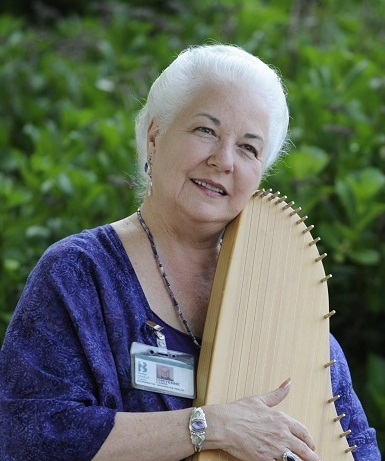Can Oil Pulling Improve Your Dental Health?
Recently I went for my regular check-up with my dentist of many years. He said he had never seen my gums look so pink and healthy. Since gum disease is a concern in aging, I was delighted with his comment. I told him the only difference was that I had been practicing oil pulling – a practice I had learned in yoga some 30 years ago but had forgotten. Oil pulling, known in Ayurvedic medicine as Kaval or Gandush, is a practice claimed to cure about 30 systemic diseases. Ayurveda is a holistic system of medicine from India that has evolved over 3,000 to 5,000 years. Oil pulling is both preventative and curative.
Oil pulling can be used to clean the oral cavity. “Gandusha and Kavala Graha are two primary oral cleansing techniques; specialized therapy to treat and prevent oral diseases. Gandusha involves filling the mouth completely with fluid so that gargling is impossible. In Gandush, the oral cavity is filled completely with liquid medicine, held for about three to five minutes, and then released. In Kavala Graha, a comfortable amount of fluid is retained with the mouth closed for about three minutes, and then gargled. It is a simple rejuvenating treatment, which, when done routinely, enhances the senses, maintains clarity, brings about a feeling of freshness, and invigorates the mind. These oral cleansing techniques can also benefit bad breath, dry face, dull senses, exhaustion, anorexia, loss of taste, impaired vision, sore throat, …..”(1)
My experience is with the Kavala Graha method using one to two teaspoons of extra virgin olive oil. Most Americans have tasted olive oil in Italian cooking so it might be easiest for most people. Start slowly with a small amount of oil for a short time and work up to more and longer. Be sure not to take too much oil. Swish and chew the oil for a few minutes while doing something else such as taking a quick shower, shaving or putting on make-up. Be sure to take time to suck the oil through your teeth and swish between cheek and gums using your tongue to get the oil into crevices. Then scrape the oil into your tongue with your teeth. Don’t swallow. Spit into the toilet rather than the sink so as not to risk clogging pipes. Don’t be surprised to see all the “white stuff” that is pulled out. Then rinse with water and brush your teeth. Notice how your mouth feels compared to just brushing alone.
Oil pulling therapy is traditionally done using sesame oil. Some sources say coconut oil has the added benefit of lauric acid, which is well-known for its anti-microbial agents.(2) If you use coconut oil that is solid, be sure to warm it a bit so it becomes liquid before putting it in your mouth. Other high quality edible oils like sunflower oil, coconut oil and olive oil can be used according to taste. Taste is important because it adds extra pleasure and ensures use. Look for high quality oils in your grocery or health food store.
An interesting aspect of Asian medicine is the concept that different areas of the tongue relate to different organs. Tongue diagnosing is often a part of the diagnostic system if one goes to a practitioner of Asian medicine. A healthy system is indicated by an evenly pink tongue. So, just for fun, look at your tongue and pay attention to changes as you practice oil pulling. We can borrow many practices from other cultures for prevention and wellness.
Studies are beginning to back up the claims of the ancients. Oil pulling can be used as an effective preventive adjunct in maintaining and improving oral health.(3)
Before you ask the opinion of your dentist, you might like to know that the American Dental Association does not support oil pulling. An article on the ADA website says, “Based on the lack of currently available evidence, oil pulling is not recommended as a supplementary oral hygiene practice, and certainly not as a replacement for standard, time-tested oral health behaviors and modalities.”(4) So, don’t throw away your toothbrush or your Listerine, but you may want to add oil pulling to your dental health routine.
Fun fact: “The toothbrush as we know it today was not invented until 1938. However, early forms of the toothbrush have been in existence since 3,000 BC. Ancient civilizations used a "chew stick," which was a thin twig with a frayed end. These 'chew sticks' were rubbed against the teeth.”(5)

Cheyenne Luzader, MS, has been coordinator of Integrative Health – Complementary and Alternative Medicine at Beebe Healthcare since its inception in 1997. Integrative Health specializes in stress and pain management. Cheyenne has a master’s degree in rehabilitation counseling with experience in mental health and addiction therapy. She is trained in mindfulness-based stress reduction, biofeedback, hypnosis, neuro-linguisitics programming, emotional freedom technique, meditation, acupressure, Reiki, therapeutic touch and Hawaiian healing methods. She is an herb information specialist, tobacco treatment specialist, and a state licensed acupuncture detoxification specialist.
References
1. J Ayurveda Integr Med. 2011 Apr-Jun; 2(2): 64–68.
doi: 10.4103/0975-9476.82525
PMCID: PMC3131773
Tooth brushing, oil pulling and tissue regeneration: A review of holistic approaches to oral health
Abhinav Singh and Bharathi Purohit https://www.ncbi.nlm.nih.gov/pmc/articles/PMC3131773/
2. https://www.webmd.com/oral-health/features/oil-pulling
3. J Indian Soc Pedod Prev Dent. 2008 Mar;26(1):12-7.
Effect of oil pulling on Streptococcus mutans count in plaque and saliva using Dentocult SM Strip mutans test: a randomized, controlled, triple-blind study.
Asokan S1, Rathan J, Muthu MS, Rathna PV, Emmadi P; Raghuraman; Chamundeswari.
https://www.ncbi.nlm.nih.gov/pubmed/18408265
4. https://www.ada.org/en/science-research/science-in-the-news/the-practice-of-oil-pulling
5. https://www.loc.gov/rr/scitech/mysteries/tooth.html
